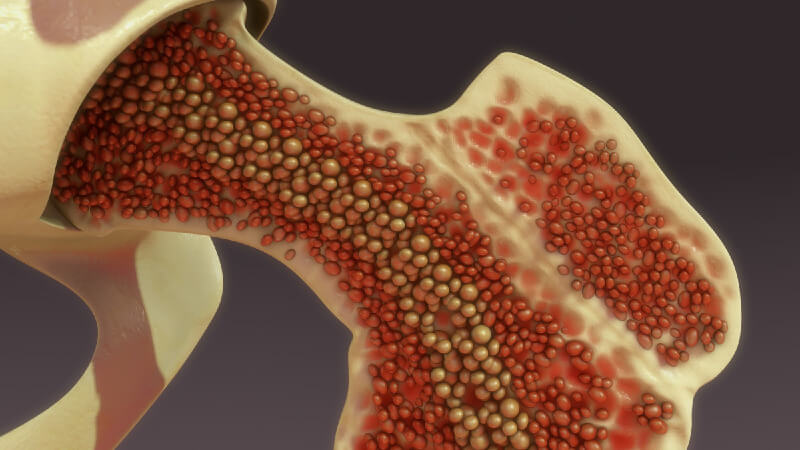Revolutionizing bone marrow transplantation
Leukaemia, lymphoma, and other genetic blood abnormalities are only a few of the many blood cell malignancies that can be treated by bone marrow transplantation, which gives patients a chance for a new beginning. Finding a suitable donor with matching bone marrow is crucial for the success of this life-saving treatment, though. This problem has inspired scholars to look at novel methods to get beyond these restrictions. mRNA delivery and a recent breakthrough in genetic editing have created new opportunities for bone marrow transplantation. We will go into the intriguing world of mRNA editing, its potential to transform bone marrow transplants, and the encouraging research results that give patients in need hope in this blog article.
Bone Marrow Transplantation: An Overview
Understanding the basics of bone marrow transplantation is crucial before exploring the revolutionary possibilities of mRNA editing. The creation of blood cells, including red blood cells, white blood cells, and platelets, is crucially dependent on the soft, spongy tissue called bone marrow, which is found inside our bones. However, a number of illnesses, including leukemia, lymphoma, and aplastic anemia, can impede the bone marrow’s normal activity, with potentially fatal effects. Hematopoietic stem cell transplantation (HSCT), often known as bone marrow transplantation, is a medical technique that involves replacing unhealthy bone marrow stem cells from a donor with damaged or dysfunctional bone marrow. By producing new blood cells, these stem cells can successfully treat the underlying illness and strengthen the patient’s immune system.
Challenges in Traditional Bone Marrow Transplantation
Even though bone marrow transplantation has saved countless lives, there are still certain difficulties and restrictions with it. Finding a matching donor, usually a member of the donor’s immediate family or an unrelated volunteer, is one of the biggest obstacles. Human leukocyte antigen (HLA) matching determines donor-recipient compatibility, which has a substantial impact on the transplant’s outcome and the likelihood of complications such as graft-versus-host disease (GVHD). When the recipient’s body is attacked by the transplanted immune cells because they see it as foreign, GVHD results. Immunosuppressive drugs are frequently needed to treat this problem since it can range in severity from minor to life-threatening.
Additionally, conventional transplant procedures use entire stem cells from the donor, which run the risk of introducing genetic abnormalities or illnesses. Researchers are looking for novel approaches to increase the accuracy and safety of bone marrow transplantation as a result of this constraint.
mRNA Editing: A Game Changer
Here comes mRNA editing, a cutting-edge technique that might be able to solve many of the problems with conventional bone marrow transplantation. Messenger RNA (mRNA) molecules, which act as blueprints for protein creation within cells, are modified during mRNA editing. The proteins that cells make can be affected, hence changing the functionality of the cells, by carefully manipulating these mRNA templates.
The following are some game-changing benefits of mRNA editing in the context of bone marrow transplantation:
HLA Matching: By using mRNA editing, it is now possible to change the HLA genes in donor stem cells so that they more closely resemble those of the recipient. The likelihood of a successful transplant can be increased and the danger of GVHD can be decreased with this personalized strategy.
Genetic Disease Correction: Prior to transplantation, mRNA editing has the ability to fix the disease-causing genetic alterations in patients with genetic illnesses such as sickle cell anemia or thalassemia. As a result, patients might no longer be dependent on finding a donor who is ideally matched to them.
Reduced Immune Response: It is feasible to lessen the expression of some immune-stimulating proteins by altering the mRNA of donor stem cells. As a result, the immunological response during transplantation may be less, significantly lowering the risk of GVHD.
Enhanced Safety: The risk of infection or genetic disease transmission from the donor to the recipient exists with traditional transplantation. A safer approach is guaranteed via mRNA editing, which enables complete risk screening and rectification of any identified issues.
Clinical Progress and Promising Results
There is real potential for mRNA editing in bone marrow transplantation. Preclinical and clinical studies have advanced significantly in recent years. Researchers have effectively modified stem cells and improved transplantation results using mRNA editing techniques.
For instance, scientists have successfully converted sickle cell patient stem cells into healthy, functional cells by correcting genetic abnormalities in these cells. The patient can then get these modified cells through a transplant, potentially treating the illness without the requirement of a perfectly matched donor. Early clinical trials have also demonstrated encouraging outcomes in lowering the prevalence and severity of GVHD by HLA matching via mRNA editing. These innovations are opening the door to safer and more widely available bone marrow transplants.
Challenges and Ethical Considerations
Even though mRNA editing has a lot of potential, there are still some difficulties and moral dilemmas to be resolved. Safety is still of utmost importance since any inadvertent modifications to the mRNA could have unanticipated effects. Further research is necessary to determine the long-term impact of mRNA editing on the modified stem cells and the patient’s general health. The ethical issues raised by modifying human genetic material also need to be carefully considered. It is crucial to make sure that technology is applied ethically and responsibly.
Medical innovations like mRNA editing have the potential to change the face of healthcare. This method offers patients with life-threatening illnesses and disorders new hope in the field of bone marrow transplantation. MRNA editing has the potential to revolutionize bone marrow transplantation, making it more accessible and secure than ever before. It will do this by improving compatibility, lowering problems, and maybe treating hereditary illnesses.
Source
- https://www.mayoclinic.org/tests-procedures/bone-marrow-transplant/about/pac-20384854
- https://www.cancer.org.au/cancer-information/types-of-cancer/leukaemia
- https://www.genome.gov/genetics-glossary/messenger-rna
- https://www.ncbi.nlm.nih.gov/books/NBK546662/#:~:text=Introduction,can%20also%20have% 20detrimental%20effects.

